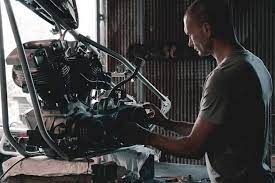Harley Maintenance
There are many benefits to owning a Harley-Davidson motorcycle.
For one, it’s a less expensive investment than a traditional car and other large vehicles.
On the road, there is greater mobility and plenty of opportunities to enjoy the fresh air and cool breeze.
While a Harley-Davidson motorcycle doesn’t come with some of the hassles of larger vehicles, it still requires routine Harley maintenance like every motor vehicle.
Taking care of a Harley-Davidson motorcycle entails paying attention to any small or big changes experienced when taking it out for a ride.
This means not ignoring smaller issues and waiting for them to escalate into bigger, potentially life-threatening problems.
While much of Harley maintenance can be done at home.
Other aspects should be professionally serviced by an experienced mechanic on a regular basis.
When keeping a Harley-Davidson in top shape, these are the things to check for during routine Harley maintenance:
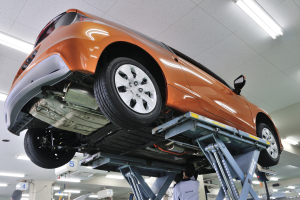
Oil & Filter Changes
Like any other motor vehicle, Harley maintenance like oil and filter changes is also important
This is essential for keeping the engine in excellent condition and running smoothly on the road.
Not only do you not want parts to grind, but you also want to avoid carbon buildup by keeping the oil clean.
Of course, how often you should change your Harley maintenance depends on the type of oil you use.
For mineral-based oils, an oil and filter change is recommended twice a year or every 2000 miles if the motorcycle is on the road often.
For Harley-Davidson motorcycles that use synthetic oils like AMSOIL, the oil and filter can be changed every 5000 miles.
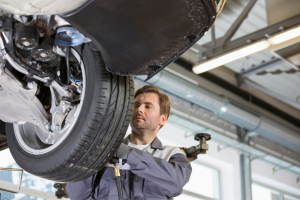
Brake System Inspection
Just as important as an oil and filter change is a brake system inspection to ensure the safe operation of a Harley-Davidson motorcycle on the road.
This means ensuring the brakes are well padded and not too worn down to grinding and creating a safety hazard.
This also means checking the discs and oil lines and any squealing noises that need to be addressed.
A brake system inspection also entails checking the fluid reservoirs so they are adequately filled and won’t cause life-threatening problems.
The last thing you want is for your brakes to fail you in the middle of a ride and get into a collision that can result in life-threatening injuries.

Tire Pressure & Condition
Additionally to a brake system inspection, it’s equally important to check the condition of the tires and ensure they have the recommended pressure.
Look for any wearing and tearing of the tire’s treads and ensuring there is enough depth to avoid friction problems on the road.
Other things to look for that can impact the tires’ functionality include.
Cracks, uneven wear, and embedded sharp objects that can create holes in the tires and result in air leakage.
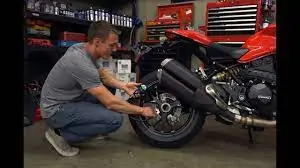
To ensure the tire pressure is at the recommended psi levels, you’ll need to refer to your owner’s manual and check the pressure using a tire-pressure gauge.
If the psi levels are too high, this risks faster wear and tear of the tires, and at worse, can cause the tires to blow out.
If the psi levels are too low, this causes the sidewalls to bend more and can cause the tires’ rubber to overheat and detach from its structure.
In the worst-case scenario, a low psi can also cause a tire blowout.
Like bad brakes, poor-quality tires are also a safety hazard that can increase the likelihood of collision and/or serious injuries.
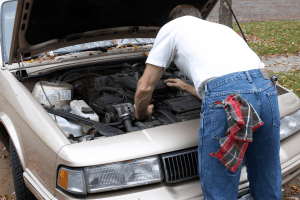
Professional Inspection
Perform routine Harley maintenance on your own, it’s also a good idea to have your Harley-Davidson inspected professionally for good measure.
While a professional mechanic will still perform the usual routine checks (tires, brakes, oil, and filter), they will also provide additional services, such as:
- Air filter inspection and replacement
- Exhaust system inspection to repair any leaks
- Spark plug inspection and replacement as needed
- Transmission fluid replacement
- Primary chain inspection, adjustment, cleaning, and lubrication
- Clutch and throttle inspection, adjustment, and lubrication
- Rear-drive belt inspection and adjustment as needed
- Fuel valve, lines, and fittings inspection
- Air Suspension inspection
- Jiffy stand lubrication and tightening fasteners
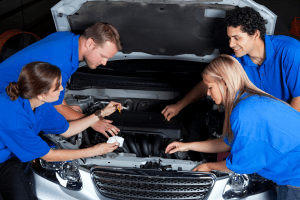
For better Harley maintenance…
Have a professional inspection and service should be done routinely to ensure your Harley-Davidson stays in top shape.
The first inspection of a brand new Harley-Davidson should take place when the motorcycle reaches 1000 miles.
After that, inspection should take place every 2000 to 5000 miles depending on the type of oil used.
If any problems are experienced prior to the next expected inspection.
Service immediately to diagnose and treat the problem early and prevent worse problems from unfolding further down the road.
Harley Davidson maintenance cost
Harley-Davidson motorcycles are renowned for their powerful performance and iconic design.
Like any vehicle, they require regular maintenance to ensure optimal performance, longevity, and safety.
The maintenance costs associated with Harley-Davidson motorcycles can vary based on factors such as the model, age of the bike, riding conditions, and the type of maintenance required.
Here are some key points to consider regarding Harley-Davidson maintenance costs:
- Scheduled Maintenance: Harley-Davidson recommends following their scheduled maintenance intervals outlined in the owner’s manual. These maintenance schedules typically include tasks such as oil and filter changes, spark plug replacement, air filter cleaning or replacement, belt and chain inspection, brake system check, and general inspection of various components. The cost of scheduled maintenance can vary depending on the service provider, but it is generally affordable and essential for keeping the motorcycle in optimal condition.
- Fluid Changes: Regular fluid changes are necessary to maintain the proper functioning of the motorcycle. This includes changing the engine oil, transmission fluid, primary chaincase oil, and brake fluid. The cost of fluid changes will depend on the type of fluids used and whether you perform the task yourself or have it done at a dealership or independent motorcycle service center.
- Tire Replacement: Tires are a critical safety component of any motorcycle, and their condition should be regularly inspected. Depending on the type and brand of tires, as well as riding habits, you may need to replace them periodically. The cost of tire replacement can vary based on the brand, size, and type of tires you choose.
- Brake Maintenance: Proper brake function is crucial for safe riding. The cost of brake maintenance can include brake pad replacement, brake fluid flush, and rotor inspection or replacement. Brake maintenance costs can vary depending on the extent of the work required and whether you opt for original Harley-Davidson parts or aftermarket alternatives.
- Warranty Coverage: If your Harley-Davidson motorcycle is still under warranty, certain maintenance services may be covered, reducing your out-of-pocket expenses. It is essential to review the warranty terms and conditions to understand what is covered and for how long.
- DIY vs. Professional Servicing: Some motorcycle owners choose to perform basic maintenance tasks themselves to save on costs. However, certain maintenance procedures, especially those requiring specialized tools or technical expertise, are best left to professional mechanics. DIY maintenance can help reduce costs, but it is important to ensure that you have the necessary skills and knowledge to perform the tasks safely and correctly.
- Accessories and Upgrades: The cost of maintaining a Harley-Davidson motorcycle can also be influenced by the addition of accessories or upgrades. These can include items such as custom exhaust systems, performance enhancements, and cosmetic modifications. The cost of accessories and upgrades will depend on the specific products you choose.
It is worth noting that the overall maintenance costs for Harley-Davidson motorcycles can vary significantly from one owner to another based on individual riding habits, maintenance practices, and the specific model of the motorcycle.
Regular maintenance, performed as recommended by the manufacturer, can help prevent more costly repairs in the long run and ensure a smooth and enjoyable riding experience.
Harley-davidson maintenance checklist
Performing regular maintenance on your Harley-Davidson motorcycle is essential to ensure its optimal performance, longevity, and safety.
Here’s a maintenance checklist to help you keep your Harley-Davidson in top condition:
- Check Fluid Levels: Regularly check the levels of engine oil, transmission fluid, primary chaincase oil, and brake fluid. Ensure they are at the recommended levels and top up or change fluids as necessary.
- Inspect and Clean Air Filter: Check the air filter regularly for dirt, debris, and clogs. Clean or replace the air filter according to the manufacturer’s recommendations to maintain proper air intake and engine performance.
- Inspect and Lubricate Cables and Controls: Check throttle, clutch, and brake cables for smooth operation and proper adjustment. Lubricate them if necessary to ensure they move freely without binding.
- Inspect Drive Belt or Chain: Check the drive belt or chain for signs of wear, proper tension, and lubrication. Adjust or replace them as needed to maintain smooth power transmission.
- Inspect Tires and Tire Pressure: Regularly inspect the tires for tread wear, cracks, or damage. Check the tire pressure and ensure it matches the manufacturer’s recommended levels for optimal handling and safety.
- Check Brakes: Inspect the brake pads or shoes for wear and replace them if necessary. Check the brake fluid level and condition. Ensure proper brake function for safe riding.
- Inspect Lights and Electrical Components: Check all lights, including headlights, taillights, turn signals, and brake lights, to ensure they are working correctly. Inspect the battery for proper voltage and clean any corrosion from terminals.
- Inspect Suspension Components: Check the front forks and rear shocks for leaks, proper adjustment, and smooth operation. Ensure that the suspension components are in good condition for a comfortable and controlled ride.
- Inspect Exhaust System: Check the exhaust system for any leaks, loose connections, or damage. Ensure that the exhaust is securely mounted and functioning properly.
- Perform Regular Oil and Filter Changes: Follow the manufacturer’s recommendations for oil and filter changes based on mileage or time intervals. Use the recommended oil type and filter to maintain proper engine lubrication and performance.
- Inspect and Tighten Fasteners: Regularly inspect all fasteners, including bolts and nuts, and ensure they are tightened to the specified torque settings. Loose fasteners can lead to vibrations and potential component failures.
- Maintain Proper Battery Care: Keep the battery clean and securely mounted. Check the battery’s charge level regularly and recharge or replace it as needed. Follow proper storage procedures if the motorcycle will be unused for an extended period.
Remember to consult your Harley-Davidson owner’s manual for specific maintenance intervals and procedures tailored to your motorcycle model.
Performing regular maintenance tasks and addressing any issues promptly will help keep your Harley-Davidson motorcycle in excellent condition and ensure a safe and enjoyable riding experience.
Harley 5000 mile service price
The cost of the 5000-mile service for a Harley-Davidson motorcycle can vary depending on several factors, including the dealership or service center you visit, the specific model of your Harley-Davidson, and any additional services or parts needed.
Generally, the 5000-mile service is considered a routine maintenance milestone and includes various inspections, adjustments, and replacements to ensure the motorcycle continues to perform at its best.
While it’s challenging to provide an exact cost without specific details, here’s an approximate range for the 5000-mile service:
- Labor Cost: The labor cost for the 5000-mile service typically depends on the dealership or service center rates, which can vary. It is advisable to contact your local Harley-Davidson dealership or authorized service center to inquire about their labor charges.
- Fluid Changes: The 5000-mile service often involves changing the engine oil and filter, transmission fluid, and primary chaincase oil. The cost of these fluid changes will depend on the type and brand of fluids used and the dealership’s pricing.
- Inspections and Adjustments: During the 5000-mile service, various components of the motorcycle are inspected for wear, adjusted, and lubricated as necessary. This may include checking the drive belt or chain tension, throttle operation, brake system, tire pressure, and suspension components. The cost will depend on the time and effort required to perform these inspections and adjustments.
- Additional Services: If any additional services are recommended based on the inspection, such as replacing brake pads, air filter, spark plugs, or other worn-out components, the cost of these parts and their installation will be added to the overall service price.
It is important to note that prices can vary significantly depending on the region and specific dealership or service center.
To get an accurate estimate of the 5000-mile service cost for your Harley-Davidson motorcycle, it is best to contact a local authorized Harley-Davidson dealership or service center.
They can provide you with detailed pricing information based on your motorcycle’s model and any additional services or parts that may be required.
Mile maintenance checklist
Here’s a quick maintenance checklist for your Harley-Davidson motorcycle based on mileage:
- 500 miles: At this milestone, it’s a good idea to perform an initial check of the motorcycle’s components and ensure everything is functioning properly. Inspect the tires, brakes, lights, and controls for any signs of issues.
- 1000 miles: Change the engine oil and filter to remove any initial contaminants and ensure proper lubrication. Check and adjust the drive belt tension if applicable.
- 2500 miles: Inspect and clean the air filter to maintain optimal airflow. Check the primary chaincase oil level and adjust if necessary.
- 5000 miles: Perform a comprehensive service that includes changing the engine oil and filter, inspecting the tires and tire pressure, checking the drive belt or chain tension, inspecting the brakes and brake fluid, and lubricating any necessary components. This milestone service helps keep the motorcycle in top condition.
- Every 5000 miles thereafter: Repeat the comprehensive service mentioned above, including fluid changes, tire and brake inspections, and lubrication of necessary components. Additionally, inspect the suspension components, throttle operation, and other critical systems for wear and proper functioning.
- Annual Maintenance: Regardless of mileage, it’s recommended to have an annual maintenance checkup performed by an authorized Harley-Davidson dealership or service center. This allows for a thorough inspection of the motorcycle’s overall condition and any necessary adjustments or replacements.
Keep in mind that this is a general guideline, and specific maintenance requirements may vary depending on the model, riding conditions, and individual recommendations provided in the owner’s manual.
Regular maintenance and timely servicing are crucial to ensure the optimal performance, longevity, and safety of your Harley-Davidson motorcycle.
FAQs
Q. Are Harley Davidsons expensive to maintain? A. The maintenance costs of Harley-Davidson motorcycles can vary depending on factors such as the model, age of the bike, riding conditions, and the type of maintenance required. While Harley-Davidsons may have higher maintenance costs compared to some other motorcycles, they are not necessarily prohibitively expensive to maintain. Regular maintenance tasks such as fluid changes, tire replacements, and brake maintenance are essential for optimal performance and longevity, but the costs can be managed with proper planning and budgeting. Q. What maintenance is required on Harley-Davidson? A. Harley-Davidson motorcycles require regular maintenance to ensure their optimal performance and longevity. Some common maintenance tasks include oil and filter changes, air filter cleaning or replacement, drive belt or chain inspection, brake system checks, tire inspections, and general inspections of various components. Following the manufacturer's recommended maintenance intervals outlined in the owner's manual is crucial to keep your Harley-Davidson in good condition. Q. How often should a Harley be serviced? A. The frequency of servicing your Harley-Davidson motorcycle depends on various factors, including the model and the manufacturer's recommendations. Generally, Harley-Davidson recommends regular service intervals based on either mileage or time. For example, you may need to service your Harley-Davidson every 5,000 miles or annually, whichever comes first. It is important to consult the owner's manual or contact an authorized Harley-Davidson dealership for the specific service schedule tailored to your motorcycle model. Q. Is 25000 miles a lot for a Harley? A. Harley-Davidson motorcycles are built to be durable and reliable, and many owners enjoy riding them for thousands of miles. While 25,000 miles can be considered a moderate mileage for a Harley-Davidson, it is not necessarily a lot. However, the overall condition of the motorcycle and how well it has been maintained can have a significant impact on its performance and longevity. Regular maintenance and proper care can help ensure that a Harley-Davidson motorcycle continues to perform well even after reaching higher mileage. Remember that the cost and frequency of maintenance may vary based on several factors, including individual riding habits, maintenance practices, and the specific model of the Harley-Davidson motorcycle. It is advisable to consult with an authorized Harley-Davidson dealership or service center for personalized advice and accurate information regarding maintenance and servicing for your specific motorcycle.
